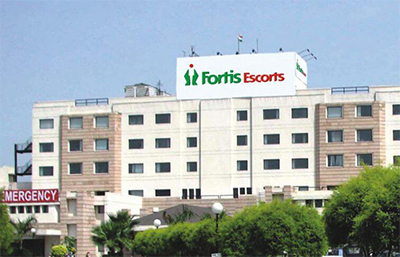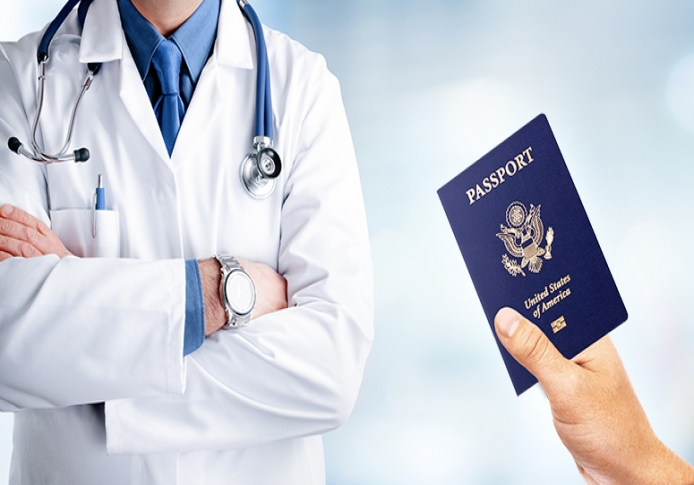Importance Of Medical Tourism Post COVID Pandemic
The coronavirus pandemic has shown the worth of implementing standards or best practices to mitigate COVID-19 infection risks for patients throughout travel and treatment.
Medical travel was put on hold in 2020 and now again in 2021 as the coronavirus outbreak spread throughout the globe, compelling countries to shut down borders and restrict travel. In the peak of the pandemic, healthcare institutions, as well as top medical travel destinations cut back on treatments they provided, suspending elective methods and channeling healthcare resources in battling the infection. Now, as travelling is steadily returning to normal, medical tourist have new belief from a medical tourist destination - these patients now not only look for quality and affordability of medical care but also a medical travel destination that has put in place ample measures to safeguard their health, given the COVID-19 pandemic.
Given that the pandemic has increased the risk on safety, in addition to healthcare quality, it is crucial for healthcare providers to make sure they have executed protocols that mitigate the risk of COVID-19 infection during travel and all touch points before and through out the treatment.
The medical tourism industry was running fluently until the Global pandemic disrupted the whole travel and tourism industry. The industry, which was worth $639 Billion in 2017, grew by 6.5 per cent from 2015, as reported by the Global Wellness Institute (GWI). Roughly 830 million wellness and medical trips were made in 2017, of which 209 million were made to Asia accounting for $100 Billion.
Asia Pacific accounted for 21.4 per cent of the global wellness and medical tourism expenditure and 31 per cent of all wellness tour in 2017. China, Japan, India, Thailand, Indonesia, Malaysia, and the Philippines are some of the major destinations for wellness and vital tourism. Health, wellness tourism trips to Asia were projected to reach 128.3 million by 2022, according to GlobalData, before the pandemic hit.

Destinations that implement established plan to address the challenges created by the pandemic will be able to recover more quickly. Sri Lanka and Thailand, for example, implemented systematic strategies to flatten the COVID-19 curve and reopen their economies more rapidly compare to anyone else.
COVID-19 Certification of agreement offers third-party validation of any medical travel program’s framework and protocol for controlling COVID-19 transmission, aiding confidence and boosting faith for healthcare consumers and other stakeholders. The certification also communicates to prospective international patients about the particular safety protocols implemented, including COVID-19 testing, personal protective equipment (PPE) for patients and healthcare workers, and visitor/associate guidelines.
Before the pandemic, healthcare consumers were often slow to compensate for virtual consultations, and the request for telehealth was low. With global travel restrictions, the demand for telehealth solutions has increased and executive barriers have been modified in certain countries to make virtual care easier for patients to access. Telehealth services are poised to grow aggressively over the coming years, granting hospitals and healthcare facilities to implement telehealth solutions with the potential to increase medical travel volume in a post-pandemic world as New Normal.
The coronavirus pandemic has demonstrated the worth of implementing standards or best practices to mitigate COVID-19 infection risks for patients throughout travel and treatment. The heightened health realization has pushed more and more patients to increase their expectations and request healthcare delivery that is not only of high quality but also safe. As the COVID-19-induced travel restrictions ease across the world, it is mandatory on healthcare providers to implement protocols that mitigate the risks of COVID-19 or other infectious agents along all medical tourism journeys, and communicate these to patients to build trust. This new metric serves as a pointer for prospective patients to identify medical tourism programs that prioritize the quality and safety of care in light of the pandemic and to prepare for future pandemic events.
Plan and Strategy that will be highlighted in 2021?
In the post-COVID era, things are now supposed to change for good in terms of medical tourism for India. Soon after the COVID-19 pandemic, India has managed to manufacture medical equipment, disposables, drugs and vaccine efforts made by India has placed all of us as a global leader. India not only satisfied the domestic needs, but also rose to the occasion and has given the support hand to other countries. Another important aspect is that large numbers of health workers and staffs have received COVID-19 vaccines. This means that doctors and health staffs are now very much safe and they will not be spreading the infection.
India, known for its Ayurveda and wellness practices, could benefit so much from medical tourism as the world steadily recovers from COVID-19 pandemic. Our oldest system of medicine, herbal cures and wellness methods are what people will desire for in the coming months as they will deal with the challenges brought forward by coronavirus infection. After COVID, medical tourism in India is expected to grow and we all should be prepared for this opportunity.
The COVID-19 pandemic has also transformed the way the government and private players are projecting to bring the much needed change in the healthcare system. There has been a successive focus on telemedicine services and the government also issued new guidelines to make telemedicine a legal practice in India. The Ministry of Health and Family Welfare (MoH&FW), along with NITI Aayog has rolled out the new guidelines that will let registered medical practitioners (RMPs) give healthcare services using telemedicine. Furthermore, the government has also launched the NDHM (National Digital health Mission) to address the country’s health emergency. The major components of this mission encompass telemedicine, health IDs, health records, health insurance that covers pandemic, Health packages and Testings, along with e-pharmacy and digi-doctor services & Emerging Corporate and Group Medical Service bookings visit our site www.medicaltraetments.in

















